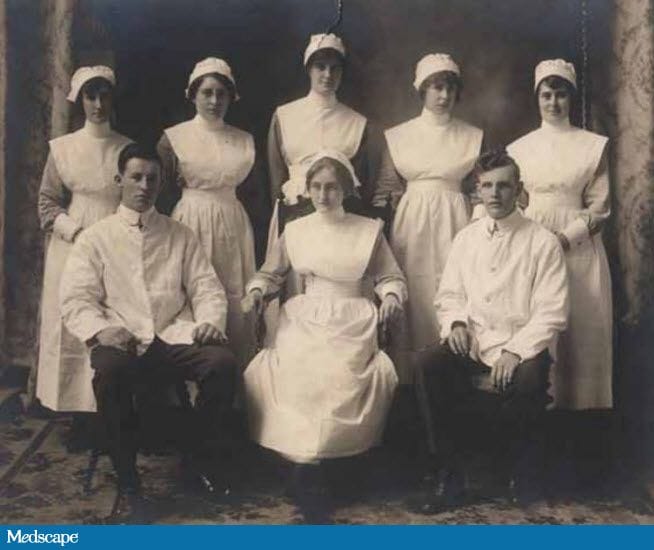Men: Just Nurses
Their niche is small -- just about 7% of the professional workforce in the United States, and very slowly expanding. For their choice of career, many have overcome prejudices, bias, misconceptions, and outright criticism. Some dislike the word "male," believing this to be an unnecessary qualifier. They are nurses, and they happen to be men.
Men's History of Caretaking
Nearly every article and book about men in nursing describes the long history that men have as caregivers of the sick. So what happened? When nursing grew into a profession in the late 19th century, with uniform standards of education and practice, few men were found among the ranks of these new nurses. This was hardly surprising, for at the time, nursing was one of the only professions open to women, whereas men had countless better-paying and more respected career options.
Florence Nightingale is widely blamed for the "demise of men" in nursing, because she believed that the organization and supervision of nursing care should be taken out of the hands of men. In fact, Nightingale has been quoted as saying that men were not suited to nursing.[1] Her reforms encouraged "gentlewomen" to replace the unskilled nurses who had previously been taking care of the sick. Subsequently, "nursing" became synonymous with "women's work," making it an uphill battle for a man to become a nurse. Men continued to be represented in nursing, but their numbers were small (Figure 1).

Figure 1. The graduating class of 1899 of the Victoria General Hospital, Halifax, Nova Scotia. Courtesy of Victoria General Hospital Nurses Alumni Archives.
Although a few schools of nursing for men operated in North America in the early 20th century, most hospital schools of nursing (the primary setting for the education and training of nurses) enforced inconsistent policies about the admission of men. With the passage of Title IX of the Education Amendments of 1972, it was no longer possible for educational programs to discriminate against any person on the basis of sex.[2]
Men crawled, rather than raced, to the profession of nursing. The proportion of men in the nursing workforce climbed gradually, from 2.7% in 1980 to 6.6% in 2008[3] -- not as swift as expected or hoped, but faster than the growth of the total registered nurse population. (In comparison, women in medicine grew from 7% in 1969 to 48% today).
Medscape Nurses © 2012
WebMD, LLC
Cite this: Just Call Us Nurses: Men in Nursing - Medscape - Aug 16, 2012.





Comments